41 F. high on Wednesday at MSP.
25 F. average high on December 21.
33 F. high temperature on December 21, 2015.
3 seconds. The Twin Cities will enjoy (?) an additional 3 seconds of daylight today. Spring fever anyone?
December 22, 2000: A chilly day in Minnesota, with a high of zero degrees in Minneapolis, and a low of 14 below.

Rain on Christmas? Santa May Need a Boat on Sunday
'Tis the season to be stressed. This year's Christmas card should show us all passed out on the couch. It's ironic: we exchange gifts - but the most precious gift of all is time. But it's hard to turn that into a jingle or 30 second commercial.
Any other December we might be looking at a foot of snow on Christmas Day. But a storm track west of MSP will pull enough warm air into the storm's circulation for a hard rain Sunday, possibly starting as a little glaze ice during the morning hours. Travel Sunday should be a mess with ponding of water on highways, minor flooding, even thunder and lightning.
I hope Santa is waterproof.
In the meantime today should rub you the right way (low 30s, no drama) and a period of wet snow Friday may drop an inch of slush - temperatures close enough to 32F for mainly-wet roads.
Christmas Eve looks quiet and dry, but a big storm tracking from Denver to Fargo will spark an almost March-like rain event on Christmas Day. We cool down into the 20s next week; closer to average for late December.
One of these days Minnesota's weather will be average.
Christmas Day Temperature Spike.
Temperatures run a few degrees above average into Saturday, and then
surge on Sunday as a powerful storm pulls unusually mild air unusually
far north for late December. Not sure about 50F, but low to mid 40s seem
likely, about 20 degrees warmer than average. ECMWF numbers for MSP:
WeatherBell.
Marchlike Storm on Christmas Day.
With cold surfaces rain will initially freeze on contact with roads,
sidewalks and powerlines Sunday morning, before temperatures surge
through the 30s into the 40s, with all rain by midday and afternoon,
heavy at times in the metro. But north and west of a line from roughly
Alexandria to Brainerd to Duluth precipitation will fall as an icy mix
and wet snow. Fargo and far northwestern Minnesota could pick up 1-2
feet of snow by Monday. The metro area will see mostly rain, slushing up
the snow already on the ground. Nearly 1" of liquid water may cause
problems with run-off and flash flooding by Sunday evening and night.
Temperatures fall below freezing on Monday, turning whatever snow is
left in your yard into solid ice.

Tracking a Christmas Day Storm.
The same storm that soaked San Diego Wednesday will produce flooding
rains across Arizona and New Mexico, brushing the Upper Midwest with a
little slush on Friday. A much more intense low pressure system tracks
from Denver to Fargo Sunday, pumping warmth unusually far north, keeping
precipitation mostly-rain from Des Moines to the Twin Cities,
Milwaukee, Chicago and Detroit. GFS Future Radar: NOAA and
Tropicaltidbits.com.

Saturday Soaker in L.A. This is stormy season for California and the west coast in general, ECMWF guidance bringing a strong front into Los Angeles by Friday night and Saturday; rainfall heavy enough to spark flooding and great fun on area freeways! Map: WSI
Early 2017: Cold East - Mild West.
GFS is catching up with ECMWF guidance showing a tendency for colder,
stormier weather east of the Mississippi River; with a warm bias for the
western half of the USA looking out 2 weeks. The east coast is ripe for
a family of snowy, icy nor'easters, and I could see a ripe pattern for
heavy snow in major east coast city centers by early January.
La Nina Signal on Winter Patterns. Just like El Nino warming phases, no two La Nina cooling phases are identical. Buyer beware - generalities and oversimplifications are rampant, and short-sighted. Here's an excerpt of a good explainer at NOAA's Climate.gov: "...I’m sure you’re thinking “this is great and all, but I’m more of a visual learner and I have places to be, could you simply summarize this in a graphic?” Of course! When we combine and condense the important facts with what we already know happens to the jet stream across the Pacific Ocean during La Niña – and we apply an artistic brush – we get what you see above. A retracted jet stream over the Pacific causes a ripple effect on the atmospheric flow across the United States, which means warmer and drier than average temperatures over the southern U.S. while colder temperatures can filter in across the northwestern and north-central U.S. Wetter conditions prevail in the Pacific Northwest and Ohio River Valley as storms follow around the blocking high in the Pacific or across more northern areas near the Great Lakes. And the southern tier of the United States tends to be drier and warmer than normal as storms keep away..."
Photo credit: "The cruise ship Crystal Serenity, anchored outside Nome, Alaska, in August, before its inaugural voyage through the Northwest Passage. The trip would not have been possible before climate change led to diminished sea ice coverage." Credit Mark Thiessen/Associated Press
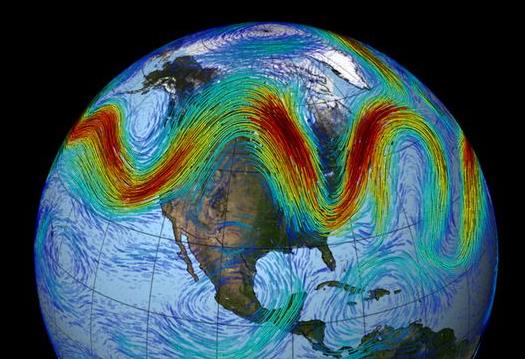
Symptoms of Seasonal Affective Disorder. Here's an excerpt from The Mayo Clinic focused on symptoms of "SAD", which can result in both physical and mental: "Symptoms specific to winter-onset SAD, sometimes called winter depression, may include:
- Irritability
- Tiredness or low energy
- Problems getting along with other people
- Hypersensitivity to rejection
- Heavy, "leaden" feeling in the arms or legs
- Oversleeping
- Appetite changes, especially a craving for foods high in carbohydrates
- Weight gain
Map credit "Researchers at The Ohio State University, University of Michigan and Texas A&M have developed a computer model to forecast power outages caused by hurricanes. The model uses NASA's Soil Moisture Active Passive (SMAP) satellite to pinpoint where trees are more likely to contact power lines during severe weather." Credit: Courtesy of The Ohio State University.
Photo credit: Cliff Mass, University of Washington. "Construction of a Doppler radar station on Langley Hill in Grays Harbor County has meant a major improvement in weather forecasting on the Washington and north Oregon coasts since it went into operation in September 2011. It cost about $9 million. A similar facility is needed for the next stretch of coastline to the south."
Photo credit: "A bus carries commuters as it travels over Waterloo Bridge in London." (Toby Melville/Reuters)
China Chokes on Smog So Bad That Planes Can't Land. Here's an excerpt from cincinnati.com: "Major
cities across northern China choked Monday under a blanket of smog so
thick that industries were ordered shut down and air and ground traffic
was disrupted. At least 23 cities issued red alerts for a swath of
pollution that has hovered over much of the nation since Friday, China's
Xinhua news agency reported. Alerts are expected to remain in effect
through Wednesday. Hospitals set emergency procedures in motion to deal
with an influx of breathing-related illnesses..."
Photo credit: "Haze envelops the Forbidden City in Beijing, China, on Dec. 19, 2016." (Photo: Wu Hong, EPA)
Beijing Now Has "Smog Refugees". Mashable reports that at least 150,000 people have fled thick smog.
China Smog Alerts Signal New Outlook.
I was just in Beijing and Tangshan, and I've never experienced that
level of air pollution - anytime, anywhere (and I was in Pittsburgh in
the 60s). It quite literally takes your breath away, and in my case, it
made me sick. It was a reminder to never take clean air for granted.
Here's an excerpt from The Wall Street Journal: "Cities
across northern China maintained air-pollution measures on Monday after
issuing a series of red alerts over the weekend, signaling a new
willingness to pay an economic price for cleaner air. With thick, yellow
air smothering three provinces as coal-fired power plants ramp up to
generate heat, the official Xinhua News Agency said more than 20 cities
in the region have joined Beijing in issuing red alerts since Friday,
triggering restrictions on factories and traffic..."
File photo: I snapped this photo of the Beijing skyline from my hotel room on December 3, 2016.
How Bad Air Came Back. Here's more perspective from TIME: "...Delhi
ranks high on a World Health Organization (WHO) list of cities with
unhealthy levels of air pollution, but it is far from alone. WHO
research found that 90% of the world’s population lives in areas with
unsafe air-pollution levels. And it’s not just cities in the developing
world, like Beijing, that face dirty air–Western metropolises like New
York City and London are on the list as well. At the beginning of
December, Paris was hit by some of the worst air pollution in a decade,
leaving the Eiffel Tower cloaked in smog. For all the deserved focus on
climate change as the planet’s major environmental threat, a much older
one–bad air–is still a persistent danger. Economic growth in places like
Delhi and Beijing has led to the rapid construction of coal-fired power
plants, quick factory construction and traffic-choked streets.
Regulations–to the extent that they exist in these places–receive little
attention from the officials charged with enforcing them..."
Photo credit: Adnan Abidi—Reuters. "Children play on a smoggy day in New Delhi, where thousands die early from air pollution yearly."
Saharan Desert Town Sees First Snow In Nearly 40 Years. Mashable has the amazing pictures.
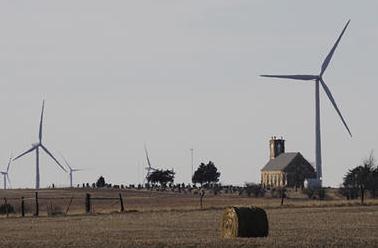
As Republicans take Minnesota's Legislature, Clean Energy Still On The Table. Here's an excerpt from Midwest Energy News: "While
Republicans will control both houses of Minnesota’s legislature next
year, a recent forum suggests clean energy policy – particularly for
solar and electric vehicles – will still have a place in the
conversation. Speaking at the legislative preview last week on energy,
transportation and climate change mitigation sponsored by the Environmental Initiative,
Rep. Pat Garofalo, chair of the House Job Growth and Energy
Affordability Policy and Finance Committee, praised the state’s
community solar program for being a cheaper alternative than rooftop
solar and suggested the program should win bipartisan support..." (File photo: Orlin Wagner, AP).
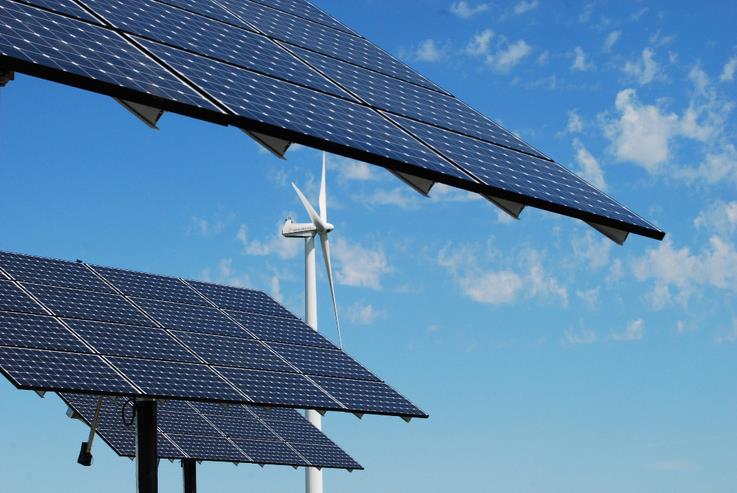
Republicans and Democrats Alike Want More Clean Energy. Dr. John Abraham at The University of St. Thomas reports for The Guardian: "...A fascinating study was just released by Yale and George Mason Universities that involved a national survey of American opinions. What this survey found was astonishing. Almost 70% of registered voters in the U.S. believe that their country should participate in international agreements to limit global warming. Only 1 in 8 registered voters believe the U.S. should not participate in such agreements. Similarly, 70% of respondents support limits on carbon dioxide, the most important human-emitted heat trapping gas. Moreover, they agree to limits even if that means electricity costs will increase (although they won’t). What this means is that 7 in 10 registered voters agree with President Obama’s signature climate accomplishment, the Clean Power Plan..." (File photo: MN.gov).
To Slow Global Warming We Need Nuclear Power. Here's an excerpt of an Op-Ed from Senator Lamar Alexander and Senator Sheldon Whitehouse at The New York Times: "...In roughly two decades, the United States could lose about half its reactors. That’s because, by 2038, 50 reactors will be at least 60 years old, and will face having to close, representing nearly half of the nuclear generating capacity in the United States. Without them, or enough new reactors to replace them, it will be much harder to reduce carbon emissions that contribute to climate change. Unfortunately, some of our federal policies to encourage clean energy, such as the Clean Energy Incentive Program within President Obama’s Clean Power Plan, do not explicitly include or incentivize nuclear power. Likewise, some states have chosen to adopt policies, such as renewable portfolio standards, that do not include or incentivize nuclear power..."
File photo credit: Nuclear Regulatory Commission.
Is Our Fear of Nuclear Energy Overblown? Pacific Standard reports: "When we think about nuclear energy, what usually comes to mind are its worst consequences. The disastrous accidents of Chernobyl and Fukushima—as well as the atomic bombings of Hiroshima and Nagasaki—loom large in the debate over whether we should rely more heavily on nuclear power as part of a shift toward a low-carbon energy economy. But do these terrible events loom too large? In a recent piece in Genetics, biologist Bertrand Jordan, of Aix-Marseille University in France, argues that most of us have a exaggerated view of the dangers of radioactivity, and that this is distorting the debate over nuclear power as a viable clean energy option. Jordan bases his argument on the results of long-term studies of Japanese atomic bombing survivors..."
Photo credit: memoriesbymike/Flickr.
ISU Study Finds Wind Turbines Have Some Impact on Crop Fields. Radio Iowa has the story; here's an excerpt: "...One result of the changes could be less dew forming on the plants. “Which would be generally a good thing because dew promotes growth of fungus and mold and some pathogens that crops are generally affected by,” Takle says. He says they found the turbines slowed the wind over the fields. “And this in meteorological terms that leads to a surface convergence. And that means that by laws of physics that there must be an upward motion over the windfarm,” Takle says. “..and it could have significance in that it could affect fog and cloudiness or rainfall if it is on a large enough scale.” The research was done behind a couple of rows of turbines. “We have not gone to look at the regional scale say of 150 or 200 turbines, the impact that might have,” Takle says. “But that is an very interesting question and one that we are pursuing, because it could have some significance...” (File photo: AP).


TODAY: Some sun, "mild". Winds: SW 8-13. High: 34
THURSDAY NIGHT: Clouds increase. Low: 26
FRIDAY: Slushy snow likely, coating to 2" possible. Winds: S 10-15. High: 33
CHRISTMAS EVE: Mostly cloudy, good travel weather. Winds NE 5-10. Wake-up: 24. High: 33
CHRISTMAS DAY: Icy start, then rain, heavy at times. T-storms possible with a risk of flooding. Winds: SE 15-30+ Wake-up: 27. High: 45
MONDAY: Windy and colder, few flurries with falling temperatures. Winds: W 15-30. Wake-up: 26. High: 29
TUESDAY: Partly sunny and brisk. Winds: W 5-10. Wake-up: 13. High: 26
WEDNESDAY: Clouds increase, few flurries. Winds: SW 8-13. Wake-up: 16. High: 31
Climate Stories...

Earth's Temperature to Dip, But Still Sizzle in 2017. Reuters has the latest: "World temperatures are likely to dip next year from a sizzling record high in 2016, when man-made global warming was slightly boosted by a natural El Nino event in the Pacific Ocean, scientists said on Tuesday. It is still likely to be the third warmest since records began. The year-on-year decline will coincide with the first year of Donald Trump's presidency. He has sometimes dismissed as a hoax the idea that global warming is caused by human activity. "Next year is not likely to be a record but it will still be a very warm year," Professor Adam Scaife of the British Met Office told Reuters of a report on Tuesday based on new computer data. He said it would be wrong for anyone who doubts that climate change is caused by humans to interpret the expected 2017 dip, prompted by the end of El Nino, which released heat from the Pacific Ocean, as a sign of an end to the long-term trend of global warming..."
El Nino-Linked Hurricanes to Increase in Pacific With Global Warming. Data suggests that warmer water, throughout a deeper layer of the western Pacific, is increasing wind speeds and intensities. Here's an excerpt from Reuters: "Small Pacific island states could be hit by more tropical cyclones during future El Nino weather patterns due to climate change, scientists said on Tuesday. El Nino is a warming of sea-surface temperatures in the Pacific occurring every two to seven years which can trigger both floods and drought in different parts of the world. Its opposite phase, a cooling of the same waters known as La Nina, is associated with the increased probability of wetter conditions over much of Australia and increased numbers of tropical cyclones. Between 2070 and the end of the century, Fiji, Vanuatu, Solomon Islands, Marshall Islands and Hawaii could face an increased frequency in powerful storms during El Nino of up to 40 percent, Australian meteorologists said in a study..." (Typhoon Haiyan image: Asian Development Bank).
Voice of America has more perspective on the apparent increase in Pacific typhoon intensity here.
Map credit: "Local weather may impact whether or not Americans believe in climate change." Michelle Gilmore.
Scientific American has more context on how our views and opinions on climate are shaped by weather. My take: it's a little like confusing an argument (weather) with a 40-year marriage (climate).
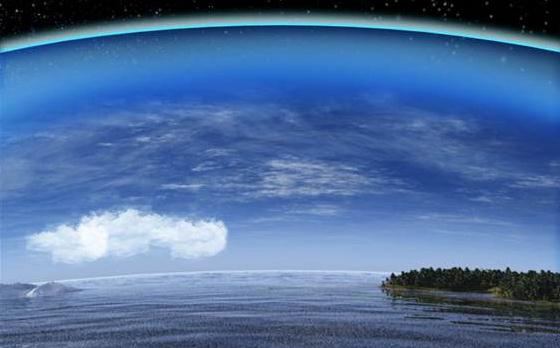
Obama Bans Drilling in Parts of the Atlantic and the Arctic. The New York Times reports: "President Obama announced on Tuesday what he called a permanent ban on offshore oil
and gas drilling along wide areas of the Arctic and the Atlantic
Seaboard as he tried to nail down an environmental legacy that cannot
quickly be reversed by Donald J. Trump. Mr. Obama invoked an obscure
provision of a 1953 law, the Outer Continental Shelf Lands Act,
which he said gives him the authority to act unilaterally. While some
presidents have used that law to temporarily protect smaller portions of
federal waters, Mr. Obama’s declaration of a permanent drilling ban
from Virginia to Maine on the Atlantic and along much of Alaska’s coast
is breaking new ground. The declaration’s fate will almost certainly be
decided by the federal courts..."
Photo credit: "The
Polar Pioneer was the first of two oil drilling rigs Royal Dutch Shell
was outfitting for Arctic oil exploration before the company ended its
contract last year." Credit Elaine Thompson/Associated Press.
El Nino on a Warming Planet May Have Sparked the Zika Epidemic, Scientists Say. Alarmist hype or is there a causal connection? Here's a clip from The Washington Post: "In a world characterized by rising temperatures, deforestation and other human influences on the environment, the spread of infectious disease is a hot topic. Many recent studies suggest that environmental changes can affect the transmission of everything from malaria to the Zika virus — and it’s increasingly important to understand these links, scientists say. This week, a new study has provided new evidence that environmental changes can increase the threat of disease. It concludes that unusually warm temperatures caused by 2015’s severe El Niño event — probably compounded by ongoing climate change — may have aided in the rapid spread of the Zika virus in South America that year. And while there are many complex factors at play in the spread of mosquito-borne diseases, the study may help scientists better prepare for the kinds of future effects we might see in our warming world..."
Photo credit: "A female Aedes aegypti mosquito in the process of acquiring blood from a human host."(James Gathany/Centers for Disease Control and Prevention via AP).
The Latest Zika News is More Bad News. FiveThirtyEight has more perspective.
Image credit: "This natural-color image mosaic, provided by NASA, taken in Aug. 2015, based on data collected during two orbital passes of the Visible Infrared Imaging Radiometer Suite (VIIRS) shows typhoons in the western North Pacific. A new scientific report finds man-made climate change played some kind of role in two dozen extreme weather events around the world in 2015." (NASA via AP)
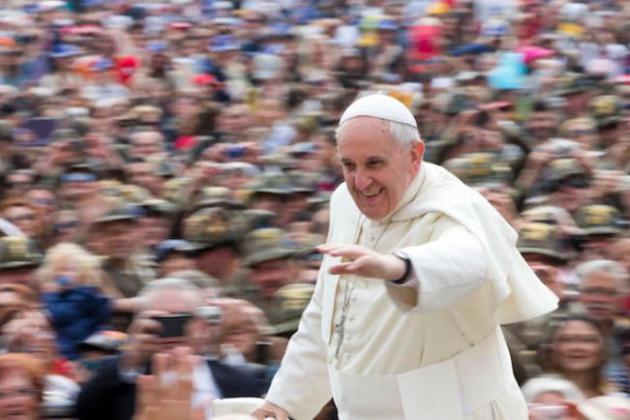
Will this weekend's storm melt most of the snow in the Twin Cities?
ReplyDelete